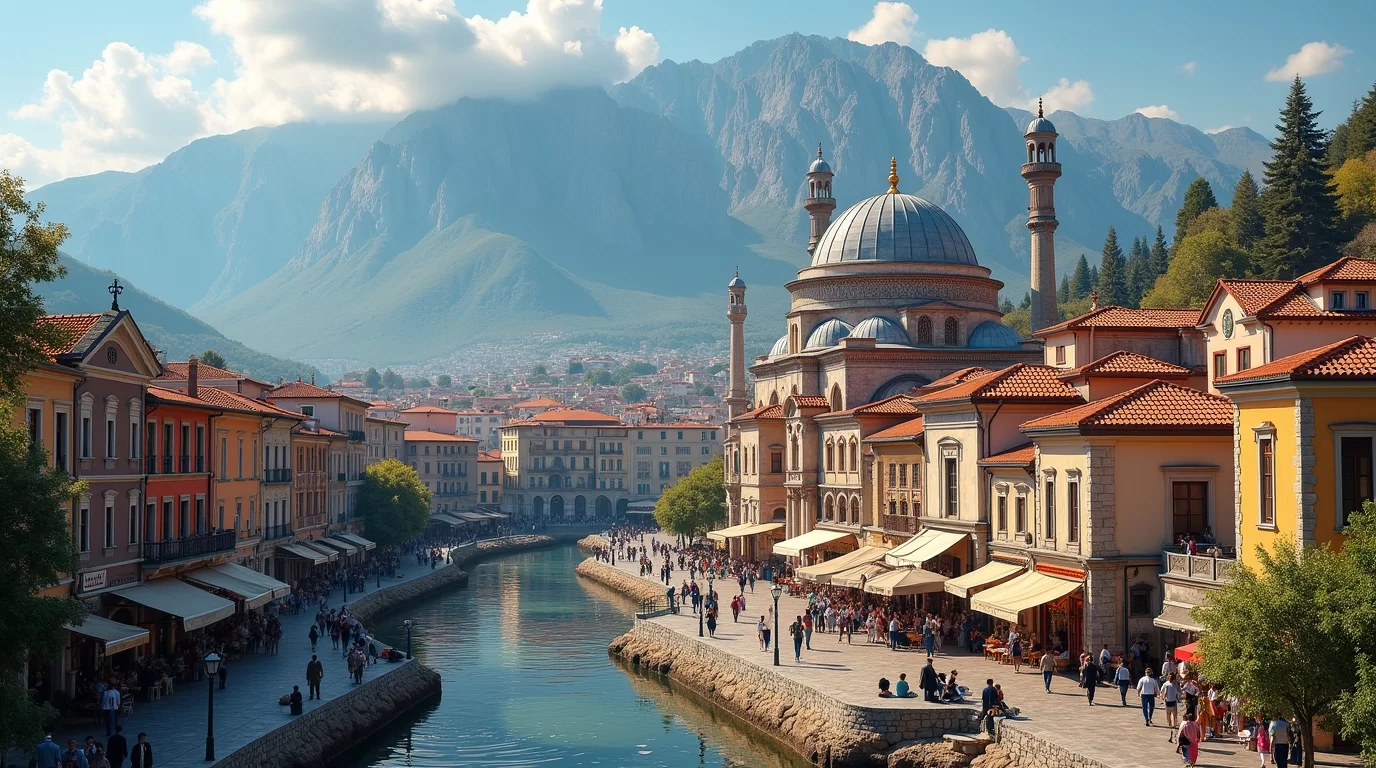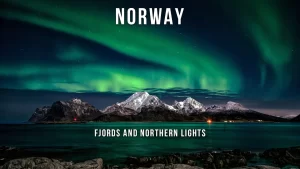Tirana Travel Guide: Discover the Heart of Albania

Tirana Travel Guide: Discover the Heart of Albania
Albania, located in Southeast Europe, is an emerging destination offering stunning nature, rich history, and warm hospitality. It is bordered by Montenegro, Kosovo, North Macedonia, and Greece, and boasts both Adriatic and Ionian coastlines.
Tirana, the capital of Albania, is a city that embodies contrast and transformation. Once known for its gray, communist-era architecture and political isolation, Tirana has undergone a remarkable revival over the past two decades. Today, it stands as a vibrant, colorful, and energetic metropolis that reflects the spi

Introduction to Tirana
Where Is Tirana Located?
Located in the central-western part of Albania, not far from the Adriatic coast, Tirana enjoys a Mediterranean climate with hot summers and mild winters. The city is nestled between hills and mountains, giving it a unique blend of urban life and natural scenery. At the heart of Tirana lies Skanderbeg Square, named after Albania’s national hero, Gjergj Kastrioti Skanderbeg. This wide-open space is surrounded by significant landmarks such as the National History Museum, with its impressive socialist realist mosaic on the facade, and the Et’hem Bey Mosque, a beautifully preserved Ottoman-era structure that withstood decades of communist rule.
Tirana’s recent transformation is visible not only in its infrastructure but also in its atmosphere. One of the most noticeable changes came in the early 2000s when then-mayor Edi Rama initiated a bold urban beautification project. Entire blocks of buildings were painted in bright, abstract patterns, turning formerly dull neighborhoods into open-air galleries. This effort was more than aesthetic—it aimed to
The Blloku district, once reserved for the communist elite and completely off-limits to ordinary citizens, is now one of Tirana’s liveliest areas. Filled with trendy cafes, chic boutiques, and vibrant nightlife, Blloku is a symbol of Tirana’s shift toward a freer and more open society. Here, locals and visitors alike gather to socialize, enjoy good food, and experience the city
Culturally, Tirana is a city of intersections. It bridges East and West, tradition and modernity, and memory and reinvention. The city is home to several notable museums, including Bunk’Art and Bunk’Art 2—two underground bunkers converted into immersive museums that explore Albania’s communist past and the paranoia of the Hoxha regime. These spaces offer sobering, yet essential insights into a time when the country was one of the mos
Beyond its historical significance, Tirana is also a green city. The Grand Park of Tirana, or Parku i Madh, features a large artificial lake, walking trails, open-air cafes, and even a botanical garden and zoo. It’s a favorite spot for families and joggers and serves as a natural escape from the city’s bustling center. Nearby, the Dajti Mountain Nati
Public transport in Tirana is improving but still developing. Buses are the primary means of transportation, and taxis are affordable by European standards. Many areas, especially the central parts, are easily walkable. English is increasingly spoken by younger generations, and locals are generally welcoming and eager to help tr
Food is another highlight of the Tirana experience. The city’s culinary scene is influenced by Mediterranean, Balkan, and Italian cuisines. Traditional dishes such as tavë kosi (baked lamb with yogurt), byrek (savory pastry filled with cheese or spinach), and qofte (grilled meatballs) are commonly found in local taverns. Coffee culture is strong in Tirana—there seems to be a café on every corner, each one
Tirana is not without its challenges. Traffic congestion, rapid urbanization, and infrastructure limitations are still present. Yet, these are part of the growing pains of a city that has seen incredible change in a short period of time. What makes Tirana truly captivating is not just its sights or attractions, but its energy—its sense of movement, reinvention, and hope.
Whether you’re wandering through historic streets, sipping coffee in a sunny plaza, or exploring the remnants of a complex past, Tirana offers a rich and authentic travel experien

Why Visit Tirana?
A Colorful Capital
Tirana’s bright facades and lively squares reflect a youthful energy that contrasts with its historical backdrop. From Skanderbeg Square to the vibrant Blloku district, Tirana offers visitors a unique blend of old and new.
Cultural and Historical Sites
Explore landmarks such as Et’hem Bey Mosque, the National History Museum, and Bunk’Art to uncover the layers of Albania’s past.
Bunk’Art
An underground museum housed in a nuclear bunker, Bunk’Art presents Albania’s communist history through immersive exhibitions.
Day Trips from Tirana
Berat
Known as the ‘City of a Thousand Windows’, Berat is a UNESCO World Heritage site with Ottoman-era architecture and hilltop castles.
Krujë
Visit the historic Krujë Castle and the Skanderbeg Museum to learn about Albania’s national hero and resistance against the Ottomans.
Albanian Cuisine in Tirana
Try traditional dishes such as tavë kosi (baked lamb and yogurt), fërgesë (peppers and cheese), and byrek (savory pastry). Local restaurants and cafes offer an authentic taste of Albanian hospitality.
Practical Travel Tips
Best time to visit is spring and fall. Currency is the Albanian lek. English is commonly spoken in tourist areas. Public transportation is affordable but renting a car offers flexibility.




[…] the Balkans. It is bordered by Bosnia and Herzegovina and Serbia to the north, Kosovo to the east, Albania to the south, and Croatia and the Adriatic Sea to the west. Its capital, Podgorica, is the […]